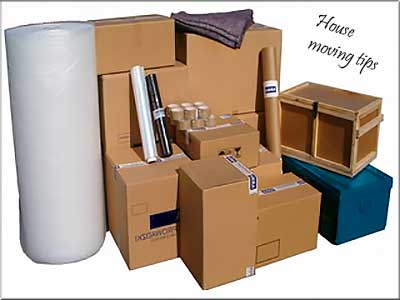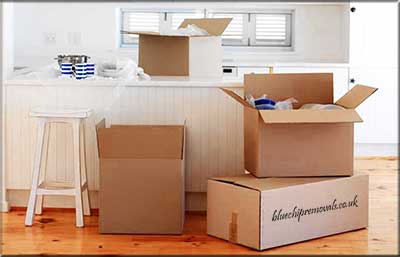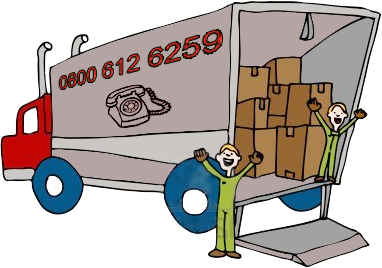House moving tips
There are two options the move can be arranged independently or by a moving company. If you decide to move on your own and you have not moved before you will need a lot of advice, guidelines and tips. To take the stress out of your shoulders you can find good reliable removals in London, Birmingham, Bristol, Manchester, Glasgow or in other UK area that will do the entire relocation process very easy for you. A good removal company can save you a lot of problems and first and foremost a huge amount of your precious time which you will be able to spend with your family.
Where to start with moving home?
So if you decided to go with a removal firm in Birmingham or London for example you should ask them to provide you with a free quote and some moving instructions. They should inform you what type of moving boxes you will need and advice you how to pack fragile items if you have decided to pack by yourself. Of course your local home movers will be happy to do that for you. Yes, it is connected with an extra costs but you can always ask for a packing option and decide later whether to take it or not.
When moving on your own
When you want to move on your own you have a lot of homework to do before the moving day comes. So where to start when moving a house? The first thing to do is of course to decide what you want to take and what items you can get rid of. For most people moving their home this is the most difficult part. How can I get rid of my old sofa or a bed? I need it and it is still in a very good condition! Really, is it? Our advice is to think twice before you decide on bringing an item of furniture to your new home. Is it going to fit to the colours of you new flat, apartment or house? Is it going to survive the move? Is it really in a good condition?
What to do with old furniture and white goods - useful tips?
There are a few tips what you can do with the furniture and your old washing machine, fridge and freezer once you have decided not to move it.
 Try to get some money for it. You can try to sell it on EBay. This portal is also a good place to give away your old household equipment for almost free. Just put a very low price and people will fight to get it. This will save you time and money you would have spent on taking those items to the tip or recycling centre. People would come to your house and collect the unwanted furniture for free. Clever, isn't it?
Try to get some money for it. You can try to sell it on EBay. This portal is also a good place to give away your old household equipment for almost free. Just put a very low price and people will fight to get it. This will save you time and money you would have spent on taking those items to the tip or recycling centre. People would come to your house and collect the unwanted furniture for free. Clever, isn't it?- Our next moving advice for you is to contact your local charities. There are always willing to take furniture and other house equipment. Do not break and bin everything you posses. Have a go and try to find a new home for your old stuff. There are a lot of people out there that cannot afford to buy a bed, bookcase or a wardrobe.
- And the last advice on how to get rid of unwanted items when moving is to recycle them. Just fire up your computer, open your favourite internet browser and find some local recycling centres. Please be aware you can't simply dump your furniture in the wood, backyard or anywhere you want. It would be against the law and the financial consequences may be very severe. A good practice is to contact a local man and van in Birmingham. This guys offer hourly rates and would move even single items. They can collect it and deliver to anywhere you want – a buyer, a recycling centre, to a charity or to the tip.
House move inventory making tips
OK, now if you had followed our house moving tips above you are ready to make the next step. This is also a very important part of planning the move. If you do it correctly you will be able to work out the cubic volume of all your possessions. Estimate what size of vehicle will be required to move in one go or to estimate how many trips you will have to do using for example a 7,5 ton removal van to move all your belonging from one house to another. So far we have explained why you will need to make list of all biggest items to be moved. Now we will explain how to prepare the inventory.
 Start with getting a piece of paper and something to write – a pen, a pencil, a highlighter or whatever. Sit down and think of how many different rooms are in your house.
Start with getting a piece of paper and something to write – a pen, a pencil, a highlighter or whatever. Sit down and think of how many different rooms are in your house.
Do not forget about the attic, shed, garage, cellar and any other storage rooms you may have. Write down the names of all rooms on the paper and think one more time if did not forget anything. Organize yourself a measure tape or something you could use to check the width, depth and the height of the biggest items. The measurements will be needed to calculate the cubic volume of each item. Now you are ready to have a nice walk around your house. Go to each room and write down every single piece of furniture and equipment you can see. Once you have finished with the bigger items focus on small items that will have to be put in boxes.
Try to estimate how many boxes you will need to pack them and write them down. If you do not know what type of boxes are available have a quick look on the internet. This will give you a good understanding what type of boxes you should use for particular items. Once you have all the big items and the number of boxes required on your list tick off the room you have just been in and carry on with your list until your list is complete.
Tips on working out the cubic volume of the move
Now you have done a lot of work and deserve a cap of tea. Take as much time as you need. This part is the most important and will save you a lot of money if you do it right. This part of the move preparation is very easy unfortunately not for the beginner and first time moving individuals. For an experienced mover it would take just 10 minutes. However if you do not have the industry knowledge it will take you about 2 hours. Maybe less, it depends how many items you have on your list and how accurate your list is.
Now you have two options to work out the cubic volume. The first one is to sit down and using the calculator and work out the cubic volume of every single item you have on your list. This is why we wanted you to measure all items and write down the dimensions. To calculate the cubic volume you need to multiply the width by depth and by height.
For example if you wardrobe is 5,10 ft high, 3,3 ft wide and 1,7 ft deep you will need to do the following to calculate the cubic volume of the wardrobe:
5,10 ft * 3,3 ft * 1,7 ft = 28.11 cubic feet
To get the exact cubic volume of you move you will need to do it for every single item you have on your list, including boxes. Once you have finished you need to add all cubic volumes up to get the total.
The other option for you, which may be quicker, is to find a cubic volume calculator. A lot of moving companies offer free cubic volume calculator on their websites. You can also try to find an Excel cubic volume calculator and download it for free. All you have to do is find appropriate positions input the number of items you have and the calculator will work out the cubic volume for you.
There is one more option available. Some movers to make it easier for their clients have made a list consisting of all standard house furniture and household equipment. Next to each items they have placed the average cubic volume of that item. Such a list may look like this for example:
Item |
Cubic volume |
| Wardrobe – large – double door | 40 cubic feet |
| Wardrobe – large – single door | 20 cubic feet |
| Sofa – 3 seater | 50 cubic feet |
| Microwave | 5 cubic feet |
| King size bed | 40 cubic feet |
| Chest of drawers | 20 cubic feet |
If you have such a list you no longer need to measure each items when making inventory. Also you do not have to calculate the cubic volume of each item. The list with cubic volumes will save you a lot of time. What you need to do if you have such list is to work out the total volume.
Advice on the types and sizes of removal vehicles
Good you are almost done. You probably wonder OK, I do have the total cubic volume and what do I do with it now? Do not worry you have almost finished this part of the move planning. Now you need to know what types of removal vehicles are available and what their capacity is. The most popular removal vans used for moving a house are:
- Transit van
- 7,5 ton van
- 17 ton lorry
There are different types of transit vans - Combo Style Van, Transit Type Van, Hi-Top Long Wheelbase Van, Ford Transit 3.5 Tonne pick-up and many more. The point is to let you know so you pay attention to it when you book the van and ask what's the capacity of the transit van. The capacity of vehicles is presented in cubic feet. For example a transit van capacity ranges from 250 cubic feet to 490 cubic feet. That's why it is important to ask the van hire company what size it the van they have on their offer.
The capacity of 7,5 ton vehicles spreads from 500 ft3 to 750 ft3 and the capacity of the 17 ton lorry is about 1200 cubic feet.
By now you have learned the basic info about making the inventory, calculating the cubic volume and about the capacity of the removal vans. Now you need to use your common sense and logic skills. If you worked out that your move is less than 490 ft3 you may be able to carry out your move using a transit van. It the cubic volume is large than 490 ft3 but not greater than 750 ft3 you will have to do 2 trips with a transit van or just one using the 7,5 ton vehicle. You must admit that the info above is quite clear the further explanation is not required.

Long distance home moving tips
Our advice on long distance moves focuses on one main factor – money saving. Let's say you are moving 200 miles away. If you book to small vehicle you will not complete the move in one day or you will have to pay for another vehicle and driver. Also two vans making the trip of 400 miles (you will be charged for the petrol both ways) will take much more diesel than just 1 large vehicle. Also you must know that there will be an extra charge per day for the extra van hire. The driver hire rates are also higher than porter rates. So be accurate with the vehicle size when moving a long distance. The good home moving tip is to check your inventory list once again before booking a removal van. Make sure you have included all items you want to move in your cubic volume calculations. One more relocation guideline is to check the access. Larger vehicles may not be able to drive into a narrow back lane. Very often they can simply park next to your door due to being to big. Large lorries can simply block the street and make it impassable to other cars.
Short distance house moving hints
To be hones there are not that many moving hints when you are relocating just next door or a couple of miles down. The most common problem is with the access. Removal companies arrive with to big vehicles and have to park 100 yards away from your door step. This makes the move more difficult and it makes it much longer. In addition to that carrying furniture using the longer route increases the chances of the damage. Before you book a 17 ton vehicle make sure there is enough space for it to be parked in from of your new and old house. If you book a transit van or a 17ton lorry you can make a few trips as the travelling time would not make any difference too much.



